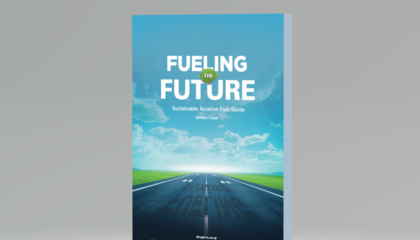
How to Make Operations More Sustainable
Addressing sustainability in business aviation is all about finding innovative strategies that go beyond SAF to reduce aviation's environmental impact...
As the aviation industry faces increasing pressure to reduce its environmental footprint, Sustainable Aviation Fuel has emerged as a cornerstone of decarbonization strategies. However, achieving sustainability in aviation involves more than just SAF. By addressing both CO2 and non-CO2 issues, and focusing on every aspect of flight operations, from meticulous flight planning to efficient routing and advanced air traffic management, it can significantly influence an aircraft’s environmental footprint.
The Crucial Role of SAF in Decarbonisation
SAF is indeed the most crucial element of the operators’ decarbonisation efforts. It reduces lifecycle carbon emissions, making it an indispensable part of their strategy. The Book & Claim system is a fantastic tool for increasing SAF availability, allowing operators to purchase SAF credits even if SAF isn’t physically available at their departure airport. Operators must communicate that sustainable operations are no longer optional but a necessity for the future of our planet. Educating clients about the long-term environmental and regulatory benefits of using SAF can help justify the higher costs. It’s about making sustainability a core value that clients are willing to invest in.
Enhancing Operational Efficiency and Addressing Empty Legs
Beyond SAF, the efforts being made to enhance operational efficiency, such as optimising flight schedules to reduce empty legs, show how technology can be leveraged to minimise environmental impact. Efficient flight planning requires close collaboration between flight dispatchers, air traffic controllers, and pilots, ensuring that the flight plan optimises routes, altitudes, and speeds based on real-time data and weather conditions. While sticking to the filed flight plan can be challenging due to unforeseen circumstances, modern tools, real-time data, and continuous collaboration can significantly enhance operations and their sustainability. Involving each layer of the industry, initiatives to educate pilots about the environmental aspects of their operations, and collaboration between all industry stakeholders are crucial steps towards achieving sustainability goals. Another significant challenge in business aviation is the issue of empty legs—flights operating without passengers. Empty legs can be reduced through better scheduling and coordination, and employing advanced algorithms to optimise aircraft utilisation.
Mitigating Contrail Formation
Another obstacle during flight is the formation of contrails. These condensation trails formed by aircraft at high altitudes can contribute to atmospheric warming. Mitigation strategies include optimising flight altitudes and using weather prediction models to avoid contrail-prone areas. While some companies are focusing on this challenge, Eurocontrol is actively researching contrail formation and mitigation as well. The impact of business aviation on contrail formation might be lower compared to commercial aviation due to the altitude at which business aviation flies, but the flexibility and innovative capacity of the business aviation sector position it as a leader in contrail research and mitigation.
Airport Initiatives and Collaborative Efforts
From the airport perspective, they face multifaceted challenges, including managing noise issues and addressing public health concerns arising from air transport micro-particles. These challenges must be prioritised alongside the broader goal of decarbonisation. The EBAA SAF recommendations, issued in January 2024, are an excellent example, as they promote the uptake of SAF by operators but also recommend a proactive approach from airports regarding the availability of such SAF. Collaborative efforts between airports and aircraft operators, such as the recent partnership between Le Bourget Airport and Dassault Aviation, underscore the importance of practical steps in sustainable operations. Concrete, measurable actions, such as pooling equipment for green taxiing, are essential to drive meaningful progress and meet the expectations of the public and industry stakeholders. Airports act as hubs of information and best practices. Sharing success stories and effective strategies educates and informs everyone involved, from ground handlers to operators, about the benefits and availability of SAF, green taxiing, and waste reduction, among others.
Overcoming Cultural Barriers
Lastly, cultural barriers, such as the discreet nature of business aviation and a lack of data sharing, hinder collaboration in sustainable operations. Overcoming these challenges requires a cultural shift within the industry. The Single European Sky initiative, which aims to streamline air traffic management across Europe, reducing fragmentation and enhancing efficiency, remains a crucial concern, highlighting the need for coordinated efforts to overcome challenges associated with national boundaries. Through continuous innovation and commitment to sustainability, every flight decision can contribute to a more sustainable aviation landscape.




